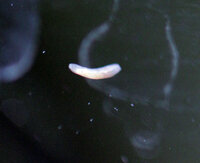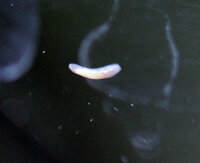Abcdefg
Member
Hi,
I am new to the hobby and I am looking to add shrimp to a 50 litre planted tank that's 7 weeks old.
I switched to RO water about a week ago, in order to stop using London tap, in the hope of being able to get some nice shrimp down the line (orange eye blue tigers hopefully)
I won't be getting anything expensive straight away, but perhaps around mid February, when the tank will be 4 months old, and will hopefully be stable.
I am however planning / hoping to add amanos next week mid-week and then some small fish, celestial danios or similar, next weekend.
I want to get the water in the right place in terms of TDs and chemistry this weekend, and I to next week (before adding livestock) and was wondering if I could get some advice?
The chap in the LFS suggested:
GH = between 5 and 8
KH = 5
PH = 6.5 to 7.0
As something to aim for when remineralising.
Can I ask:
- are recommended TDS ranges that are quoted for particular types of shrimp important in and of themselves?
I.e. is a quoted TDS range just being used as a proxy for suggesting water purity?
- can TDS ranges be exceeded if using pure demineralised RO water? E.g if there aren't any tap water nasties and unknowns, will a shrimp with a suggested TDS of 150 - 200 be happy in pure RO (0 TDs) demineralised to 250 to 350 TDS using shrimp products and EI fert dosing?
Or are shrimp very sensitive to TDS levels irrespective of what the dissolved solids are?
- are there any processes to work out what the hard scape and plants in my tank are naturally buffering towards? So I'm not fighting against them? Or is that not worth looking in to with weekly 50% water changes?
Many thanks,
Tom
I am new to the hobby and I am looking to add shrimp to a 50 litre planted tank that's 7 weeks old.
I switched to RO water about a week ago, in order to stop using London tap, in the hope of being able to get some nice shrimp down the line (orange eye blue tigers hopefully)
I won't be getting anything expensive straight away, but perhaps around mid February, when the tank will be 4 months old, and will hopefully be stable.
I am however planning / hoping to add amanos next week mid-week and then some small fish, celestial danios or similar, next weekend.
I want to get the water in the right place in terms of TDs and chemistry this weekend, and I to next week (before adding livestock) and was wondering if I could get some advice?
The chap in the LFS suggested:
GH = between 5 and 8
KH = 5
PH = 6.5 to 7.0
As something to aim for when remineralising.
Can I ask:
- are recommended TDS ranges that are quoted for particular types of shrimp important in and of themselves?
I.e. is a quoted TDS range just being used as a proxy for suggesting water purity?
- can TDS ranges be exceeded if using pure demineralised RO water? E.g if there aren't any tap water nasties and unknowns, will a shrimp with a suggested TDS of 150 - 200 be happy in pure RO (0 TDs) demineralised to 250 to 350 TDS using shrimp products and EI fert dosing?
Or are shrimp very sensitive to TDS levels irrespective of what the dissolved solids are?
- are there any processes to work out what the hard scape and plants in my tank are naturally buffering towards? So I'm not fighting against them? Or is that not worth looking in to with weekly 50% water changes?
Many thanks,
Tom




